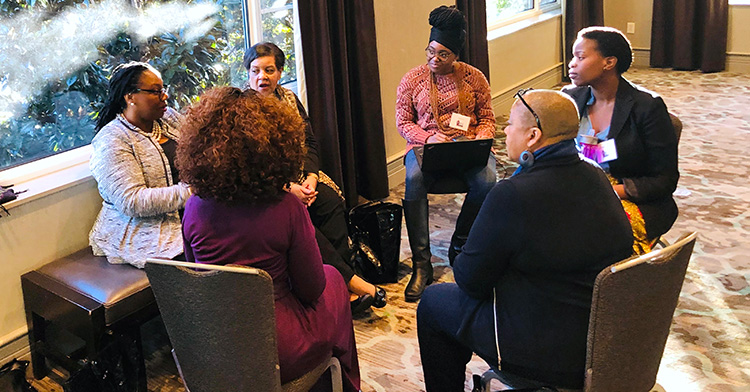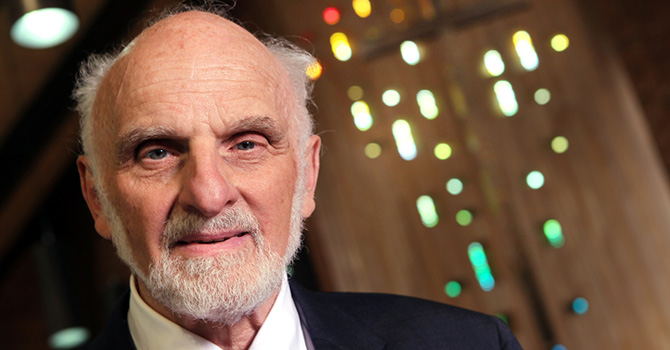Editor’s note: This article previously appeared on the Sustaining Pastoral Excellence website.
In all the learning that we have experienced in the Sustaining Pastoral Excellence program of the Evangelical Covenant Church, one of the most powerful has been the recognition that the life cycle of pastoral ministry takes place in fairly predictable stages. This “aha” moment was gleaned through general readings on church ministry, work being done by other denominations, books about clergy, discussions with retired Covenant pastors, our own anecdotal evidence, and statistical research that we conducted about our ministerial community.
Our findings, presented below in broad brush strokes, have clearly resonated with our pastors. In sharing this ministerial life cycle with more than 400 Covenant pastors, we received no words of dissent, only affirmation. The discussions around this life cycle have been so compelling that we have been asked by pastors to do presentations at their fall conference gatherings. One pastor, with 10 years of history in a particular district, told us their district cluster used the life-cycle for discussion and it created the most open, honest, and personal discussion they had ever had. Frankly, we have been surprised at the kind of chord this has hit.
Generally, we have found that the ministerial life cycle occurs in three predictable formational stages. Individual pastors may enter any of these stages earlier or later, depending on their particular life circumstances, but overall we find that these transitions take place in Years 5-8, Years 13-15, and Years 20-25. Whether a pastor is called to ministry as either a first- or second-career does not appear to make any difference in how these stages are encountered. Each stage is defined by a key question and a key word. Like rapids in a river, where the water moves faster and more intensely, these formational stages are filled with turbulence, unfolding quickly for pastors paddling in the river.
The first formational stage (years 5-8) is defined by issues of entry into the pastoral role. Expectations meet reality, strengths and weaknesses come into sharper clarity through experience, and pastors begin to know what they do not know. In this period, pastors re-examine their sense of call, and they feel an urgent need to “catch-up” in their learning.
The primary question pastors wrestle with in this stage is, “What am I doing?” Those who choose to shoot this first set of rapids honestly engaging this question and with strong connections to colleagues tend to have healthier growth as they proceed through the turbulent formational waters. Those who basically quit wrestling with this question, however, just holding on and hoping to ride through the rapids unscathed, seem to step out of the pastorate at a higher rate. Around year 5 the attrition rate shows a significant rise, spiking to a high point at year 8 in our setting.
Connection is the key word for pastors who successfully emerge from the rapids, sustaining themselves in ministry through this first stage. Ministers who have a community of similarly situated colleagues with whom they can share safely and deeply are more likely to remain healthy and establish habits of care and accountability. Essentially, when pastors shoot their first set of rapids they want people in the boat paddling with them.
The second formational stage (years 13-15) is basically a mid-life transition for ministers. In shooting the first set of rapids, the pastor has gained self-awareness. This leads, in turn, to a journey of personal re-discovery. These years between the first and second set of rapids are marked with deep transformational rumblings.
Those who make it to the second set of rapids generally have paid the price. They have been wounded from the work of ministry. Their families have paid a price. They know what they like to do and dislike doing. The question that pastors begin to ask as they approach the second rapids in years 13-15 is “Do I want to keep doing this? I have been doing this for 15 years of my life. Can I imagine doing this another 15 or 20 years”?
At this mid-point, pastors have to be able to re-imagine themselves in the pastoral role for the second half of their ministerial journey. Such re-imagining requires a high level of self-awareness, a growing contentment about one’s gifts and liabilities, and a mission motivation that outweighs the cost. Healthy habits formed early in pastoral ministry, even before the first set of rapids—and then honed in those rapids—give clergy strength as they enter this second set of rapids.
Such strength is needed, for these second rapids are the most intense in the river. These are category 5 rapids. They exact the highest cost. In this formational stage, the clergy community experiences the highest rate of attrition of any point in the river. The key word that marks this period is “sacrifice.” Being sustained through this stage, successfully emerging and paddling on towards the third formational stage, requires good self-awareness, healthy boundaries, relational fitness and a freshening of devotional patterns.
The third formational stage, which takes place in years 20-25, is marked by the realization that the end of the vocational journey lies up ahead, in the not too distant future. Pastors at this stage have now already spent more time in the pastoral role than they will in the future. The key word that rises up in these final stretches of the river is “legacy.” Here, the questions become, “How do I finish well? What will I leave behind of value?”
Pastors who choose to engage, struggle, and work with these questions do a better job of positioning themselves to finish well. Those who choose not to struggle with this question rust out, basically marking time until retirement.
My own reflections, generated out of conversations with pastors in this stage, suggests that this third set of rapids rises up at this point in the journey because old tools have become rusty. In 25 years the world changes, language morphs, the church’s focus and attention is different, a new generation is arising. One begins to realize that to speak to a new generation requires learning new things. Consider, for example, how technology has changed over the past 25 years. When I started as an associate pastor, we printed the Sunday bulletins on a mimeograph. Today, personal computers contain virtual print shops. I used to buy clip art books to spice up communications. Today, an eye-catching Web log with incredible resource links can be created in about the same time and with much less effort than it took to create a newsletter with a typewriter, clip art, and a mimeograph. Sustaining pastoral excellence through this last set of rapids requires a willingness to unlearn and relearn.
For our SPE initiative, the ability to name and describe a predictable ministerial life cycle and all its key stages has been enormously beneficial. Using this description of the pastoral life cycle, we have met with our pastors and asked them to write out their ministerial journey, based on this model. Amazingly, the highest percentage can!
Our growing knowledge about the notion of a predictable ministerial life cycle offers a key way to understand what it takes to sustain pastoral excellence. If this ministerial life cycle is real, if we know the map of the river and where the rapids lie ahead, we have a sound basis to help pastors understand how they can sustain ministerial health (a core component of excellence) for the long haul. If the habits established in the early years of ministry have a significant impact on the ability to navigate the formational rapids, seminaries, conferences, and denominations might be able to pinpoint with higher precision the disciplines they need to nurture, model, and promote. At the same time, this notion of a pastoral life cycle also helps identify potential intervention points. If we know, for example, that the first set of rapids arrive around years 5 -8, and we know that a pastor needs people paddling with them in the boat to allow the formational rapids to do their good work, shouldn’t we have a strategy in place to get those other paddlers, those other companions, in the boat? Doesn’t the ministerial life cycle suggest that first call/new call initiatives are on the mark and we should have something like this contextualized for us?
We are still giving flesh to this “aha” piece of learning. There is still much to discover. But it is this kind of learning that is generating conversation and movement for all of us in the Evangelical Covenant SPE initiative.







